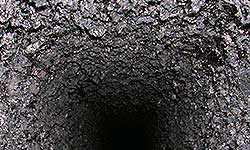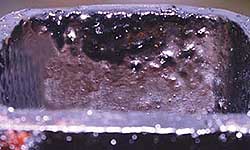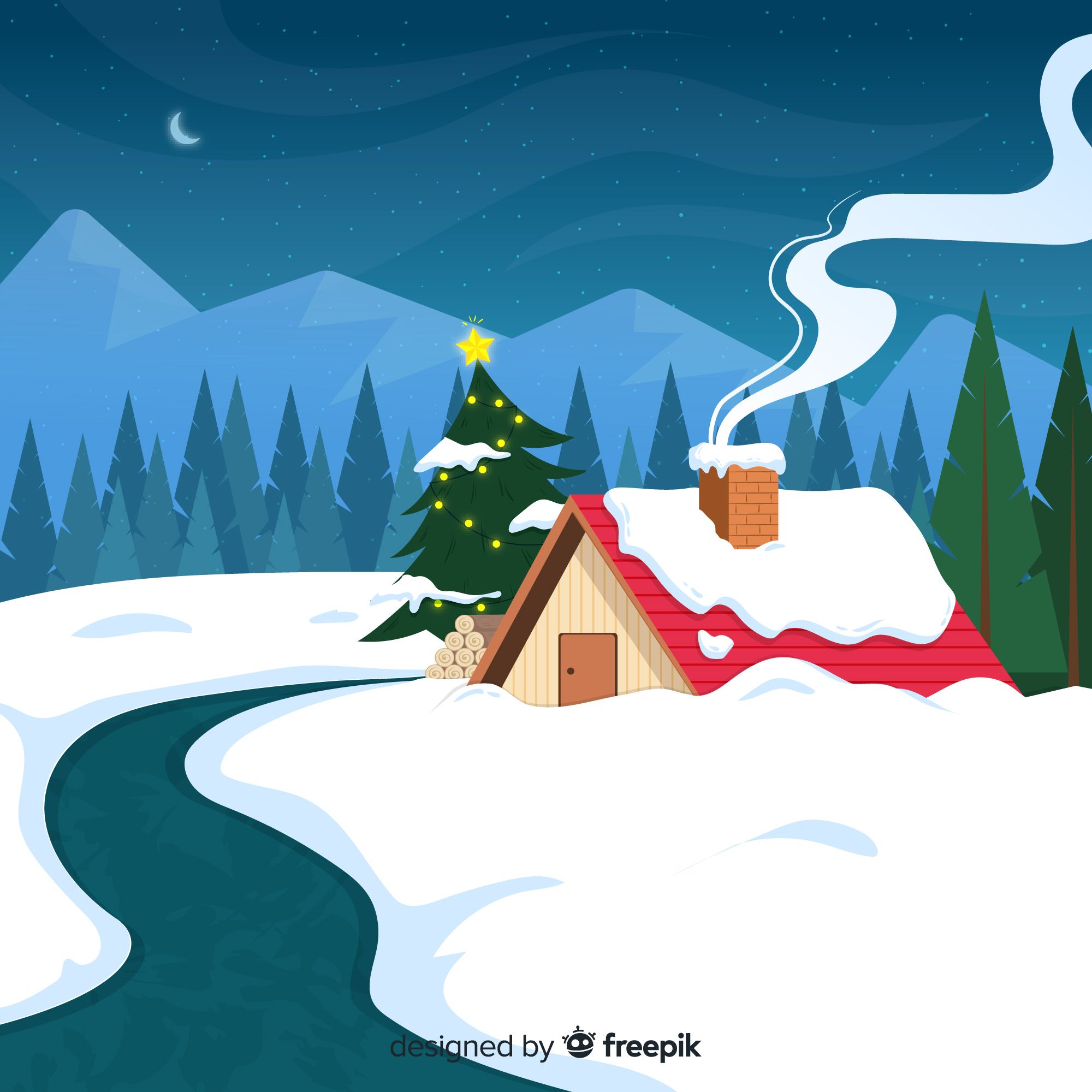
If you are like me, it may be hard to admit, but impossible to deny that colder weather is right around the corner. I'm personally not a big fan of being cold, but being from Michigan, it is part of life. One thing I do look forward to when the cold weather arrives, is warming up next to a cozy fire, and there's nothing quite like the atmosphere created by a good ol' wood fueled fire.
In most regions, similar to mine, fireplaces and wood stoves are commonly used seasonally, typically moving the fires outdoors in the warmer months. This means that chimney systems sit unused and usually not given a second thought until burning season is back upon us. This leaves ample time for issues to arise. Now (August-September) is the ideal time to start thinking about getting your chimney back in working order.
But you might be thinking that it worked fine last season, why wouldn't it be in working order now?
How Can I Tell If My Chimney Needs Cleaning or Repair? About Chimney Cleaning and Inspection.
It's recommended by the National Fire Protection Association (NFPA) to have a certified professional chimney sweep inspect and clean your chimney, at the very least, once a year. However, regular home maintenance will help keep each yearly cleaning easier and more effective. Besides potential environmental or age-related damages that can occur naturally, creosote is the main threat to stay conscious of. In short, creosote* is an unavoidable, extremely flammable, byproduct of burning wood. It goes through 3 stages.
- Stage One - very small amounts present and its flakey and easily brushed away, is mainly light soot
- Stage Two - starting to build up and become a sticky tar layer that will need help from a solvent before being able to brush away
- Stage Three - thicker buildup that appears oily or hard and shiny, at this point the problem has progressed beyond being able to brush clean and replacement of liner or chimney may be required.



Routine chimney maintenance like regular use of creosote removers, brushing in between sweeps, and periodic inspections will help avoid stage three creosote, saving you time and money in repairs and keep you chimney functioning efficiently and safely.
As far as repairs go, a trained professional will have more experience pinpointing potential threats, but when doing this yourself be sure you are looking for things like water or other environmental damages, evidence of critters making an empty chimney their home in the off season, or holes and cracks in masonry and firebricks. These are all potential problem areas that will affect how your chimney and fireplace burn and vent. Insufficient ventilation can result in inadequate draft and a smoky living space, poor air quality, and quicker creosote buildup.
*By definition, creosote is simply unburned wood particles and condensed flue gases which deposit on the inside of the chimney. The creosote forms as the flue gases exit the fireplace or wood stove, and draft upward into the relatively cold flue where condensation occurs and begins to solidify. This results in carbon-based condensation that materializes inside the flue and becomes creosote.
Learn more about creosote and getting rid of it in Northline Express's help article What is Creosote-Getting Rid of Creosote.
Chimney Cleaners, Cleaning Tools, Equipment and Supplies
In order to properly clean your chimney, make sure you have the right tools! You'll need a correctly sized chimney brush, chimney brush rods or rope and pull rings (depending on method used), a fireplace cover (for use with an ash vacuum or to contain dust), a canvas drop cloth or other kind of covering for furniture and rugs, tape, metal bucket, small shovel and broom, vacuum cleaner, and a powerful flashlight. A face respirator or mask is also an excellent choice to protect yourself from breathing in creosote and ash particles and don't forget the safety equipment, like harnesses, if you have to get up on your roof.
I emphasized the correctly sized description before chimney brush because it is very important, the incorrect size will either be completely ineffective if it's too small or difficult to impossible to maneuver if excessively larger than your chimney flue. I'll go into this more in the next section.
Northline Express has all the essential Chimney Maintenance Products you need.
How Is a Chimney Swept? Chimney Cleaning Systems Brush and Rods

So, the first essential in any chimney cleaning job is that correctly sized chimney brush and rod system mentioned before. Measure the inside diameter of your flue, chimney liner, or masonry flue and find a brush that is at least equal to that size. Slightly bigger is ok if the exact size isn't available but might require snipping off tine ends to resize. Poly or Polypropylene brushes are made for stainless steel or metal chimneys and wire brushes made for masonry chimneys. Take note of the kind of connector that exists on the brush because you'll also need rods that will work in conjunction with it. Brushes and rods come with either 1/4" NPT, 3/8"NPT or Torque Lock Connector. Similar to the brushes, rods are available in various sizes and constructed of different materials:
- Polypropylene or Proflex Rods - Flexible chimney cleaning rod for bends and offsets, thicker diameter, won't scratch stainless steel pipe
- Nylon - flexible enough to handle angles at the end of the chimney, thinner diameter
- Fiberglass - the strongest option, best for straight chimneys, great for heavy creosote removal
All rods have connectors on each end allowing for extending the length or connecting multiple style rods together to get strength and flexibility when needed.
Got a pellet stove? Check out the SootEater Rotary Pellet Stove Cleaning system. Works with any standard power drill, for your own power sweeping system.
Read our article How to Choose Chimney Brush, to get more help picking out the proper equipment.
A Chimney Sweep and Inspection should include the following:
- Checking Structure & Liner for Damages
- Clean Blower (If Applicable)
- Inspect Damper
- Inspect Chimney Cap
- Inspect Gasket
- Thorough Chimney Sweeping - Brushing and Complete Removal of Creosote
- This is also a great time to test and replace batteries in any smoke or carbon monoxide detectors to ensure proper working order.
A certified professional chimney sweep is experienced in spotting signs of deterioration and potential ventilation obstacles.
What Do You Burn to Clean Your Chimney? What Dissolves Creosote in Chimney?
Using a solvent is easy and will help you keep creosote production and buildup under control. There are so many great products to do this, and they are so easy to use. Rutland has Toss-In Creosote Remover and Kwik-Shot that make maintaining creosote as simple as tossing a stick in your fire. Anti-Creo-Soot (ACS) is a spray on creosote remover that you can treat your logs with either before burning or while starting your fire. Burning logs treated with ACS makes the soot that is produced and built up much easier to sweep away when cleaning. You will also be able to find similar products made just for wood stoves and pellet stoves!

What Happens If You Don't Clean Your Chimney?
First of all, the overall performance and safety of your operating fireplace/chimney system is at risk. As creosote builds on the chimney interior, it goes through the three stages described above and becomes more and more of a fire hazard. All three stages of creosote can exist in one chimney, and no matter if you have one or all three it's highly combustible. For example, creosote burns at 451 degrees F, and wood fueled fires can get to temperatures around 2000 degrees F in less than a minute. If allowed to build up in sufficient quantities, and ignite inside the chimney flue, the result is a volcanic chimney fire and a very high chance of a house fire. Methodical cleanings through the heating season combined with proper burning of fuel and systematic use of effective creosote and soot inhibitors, provides the best solution for trouble-free and safe performance.

Shop all your Chimney Cleaning Essentials at Northline Express, and don't forget Free Shipping on orders of $99 or more! Contact us today with questions!







